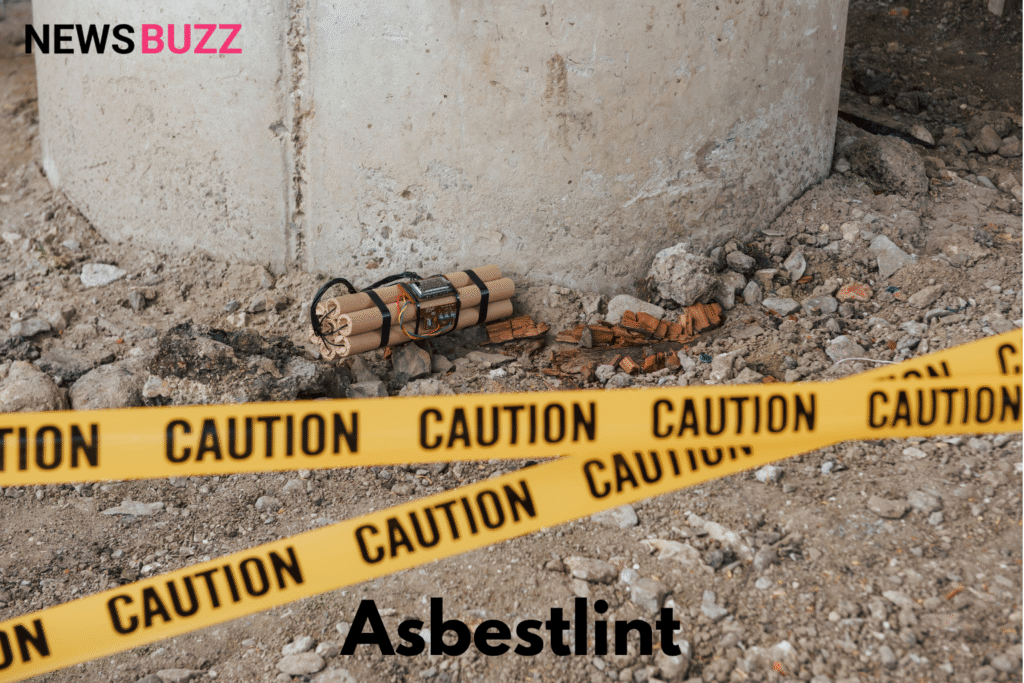Introduction
Asbestos has long been recognized as a dangerous material, responsible for severe respiratory diseases such as asbestosis, lung cancer, and mesothelioma. However, a lesser-known but equally concerning hazard is asbestlint—a term often used to describe fine, lint-like asbestos dust that can easily go unnoticed. This hidden threat can accumulate in homes, workplaces, and industrial sites, posing significant health risks if inhaled. Understanding what asbestlint is, where it forms, and how to deal with it is essential for protecting your health and the environment.
What is Asbestlint?
Asbestlint refers to microscopic asbestos fibers that resemble dust or lint. Unlike visible asbestos insulation or tiles, asbestlint is harder to detect. It often forms when asbestos-containing materials (ACMs) degrade over time or are disturbed during renovations, demolitions, or maintenance work.
Key characteristics:
- Fine, lightweight fibers easily carried by air currents
- Often invisible to the naked eye
- Can settle on surfaces like lint, making it easy to mistake for harmless dust
Also Read: Nova Scola: A Modern Approach to Education and Learning
How Asbestlint Forms
Asbestlint typically develops when asbestos-based materials deteriorate due to age, moisture, or physical disturbance. Common sources include:
- Crumbling insulation around pipes or boilers
- Damaged floor tiles or roofing sheets
- Old asbestos cement products breaking down
- HVAC systems circulating asbestos fibers from contaminated areas
When these fibers break apart, they become airborne, settle on surfaces, and can be re-released into the air through even slight movements—creating a cycle of exposure.
Health Risks of Asbestlint Exposure
Even small amounts of asbestos fibers can be harmful. Inhalation is the primary danger, as the sharp microscopic fibers can lodge in lung tissue, leading to:
- Asbestosis – Chronic lung scarring that reduces breathing capacity
- Mesothelioma – A rare but deadly cancer affecting the lining of the lungs or abdomen
- Lung Cancer – Significantly higher risk for those with prolonged exposure
Unlike many contaminants, asbestos-related diseases can take decades to develop, making early prevention critical.
Where You Might Encounter Asbestlint
Some of the most common locations where asbestlint may be present include:
- Older homes and buildings built before asbestos bans
- Industrial facilities such as shipyards, power plants, and factories
- Ceiling voids and attics containing aged insulation
- Air ducts and HVAC systems spreading contaminated dust
- Construction or demolition sites disturbing asbestos materials
Regular property maintenance and inspections are key to identifying potential risks before they escalate.
Step-by-Step Guide to Dealing With Suspected Asbestlint
If you suspect asbestlint contamination, follow these safety steps:
- Stop Disturbing the Area
Avoid sweeping, vacuuming, or touching the material—this can release more fibers into the air. - Isolate the Space
Close doors, seal vents, and limit access to the area to prevent fiber spread. - Contact Licensed Asbestos Professionals
Only trained experts with protective gear and specialized equipment should test or remove asbestos. - Conduct Air Quality Testing
Accredited labs can analyze air samples to confirm contamination levels. - Safe Removal & Disposal
Follow local regulations for asbestos removal—never attempt DIY asbestos cleanup.
Also Read: Spaietacle: A Complete Guide to This Unique Concept
Conclusion
Asbestlint may not be a widely recognized term, but the risk it represents is very real. This fine asbestos dust can linger in the air and on surfaces, posing long-term health hazards to anyone exposed. Awareness, early detection, and professional intervention are essential to reducing the dangers of asbestos-related illnesses. By treating asbestlint with the seriousness it deserves, you can protect both your health and your environment.
FAQs About Asbestlint
1. Is asbestlint different from regular asbestos?
Yes. While “asbestos” refers to the mineral fibers used in construction materials, “asbestlint” is a descriptive term for fine, lint-like asbestos dust that can easily become airborne.
2. Can I see asbestlint with the naked eye?
Often, no. Asbestlint particles are microscopic and can look like ordinary dust, making professional testing the only reliable way to confirm its presence.
3. How dangerous is short-term exposure to asbestlint?
Even short-term exposure can be risky, especially if fibers are inhaled, though the likelihood of developing disease increases with repeated or prolonged exposure.
4. Can I remove asbestlint myself?
No. DIY removal is extremely dangerous and often illegal without proper training, equipment, and permits. Always use certified asbestos removal experts.
5. How can I prevent asbestlint in my home or workplace?
Regular inspections, maintaining asbestos-containing materials in good condition, and avoiding disturbance are key prevention strategies.



